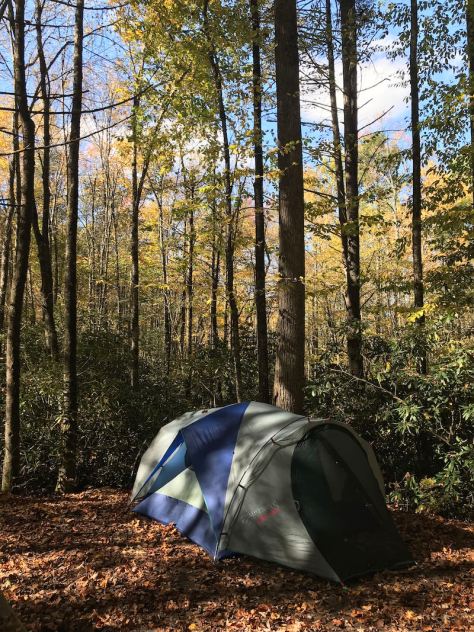Many thanks to Dale (N3HXZ) who writes:
“Thomas, Great response to your post [regarding the toughest CW paddles for field use]. What if we consider another idea: collecting the “Greatest Bloopers while Activating” shared by your readers?
I can think of several I did, but what takes the cake is a buddy of mine who forgot to attach his 50′ coax to the antenna. He worked for over an hour trying to make contacts with the coax just lying on the ground radiating. He ended up with three before he realized his setup error! But in those three contacts was Cristopher (F4WBN) from France.”
That’s funny, Dale! I remember not so long ago, I did something very similar. In my case, I forgot to attach the coax to my radio! I can’t remember if this was captured in an activation video or not.
One blooper, in particular, that stands out in my mind happened during the 2021 W4 SOTA campout.
 While I didn’t make a video of that SOTA activation, I did document this mishap in a field report. Here’s the excerpt, starting from when our hiking party finally reached the summit of Standing Indian after a long, exhausting hike:
While I didn’t make a video of that SOTA activation, I did document this mishap in a field report. Here’s the excerpt, starting from when our hiking party finally reached the summit of Standing Indian after a long, exhausting hike:
“By the time we reached the summit, it was about 14:30 local and I didn’t want to hang around for long. We had a decent hike back to the campground on a new-to-us trail.
 My hiking friends (Christie and Patricia) wanted to hear me play a little Morse Code, so instead of taking the (much easier) VHF path to activating the summit, I pulled out the Discovery TX-500, Elecraft T1, and my Chameleon CHA TDL.
My hiking friends (Christie and Patricia) wanted to hear me play a little Morse Code, so instead of taking the (much easier) VHF path to activating the summit, I pulled out the Discovery TX-500, Elecraft T1, and my Chameleon CHA TDL.
I’d packed the Chameleon Tactical Delta loop believing we’d be hitting a bald summit and I wanted to test the TDL on 20 meters to see if it could achieve a DX take-off angle.
The true summit, however, was not a bald so I had to set up the TDL among trees.
 As I deployed all of my radio gear, I attracted a mini crowd of hikers: three more day hikers, and two AT tru-hikers. I was distracted and made a big error: I assembled the CHA TDL components, and tried to drive the steel spike into the ground while talking with a hiker. But turns out I wasn’t driving the spike into the ground at all, I was driving one of the telescoping antennas into the ground!
As I deployed all of my radio gear, I attracted a mini crowd of hikers: three more day hikers, and two AT tru-hikers. I was distracted and made a big error: I assembled the CHA TDL components, and tried to drive the steel spike into the ground while talking with a hiker. But turns out I wasn’t driving the spike into the ground at all, I was driving one of the telescoping antennas into the ground!
I pulled the telescoping antenna out of the ground and discovered the tip broke and the top three sections were damaged–I couldn’t extend them. I was forcing it into rocky ground after all.
Undeterred, I deployed the lop-sided TDL, hit “TUNE” on the T1 ATU and got a 1:1 match on 20 meters.
The 20 band was incredibly quiet. I thought for sure I wasn’t receiving a thing since one side of my loop was completely compromised.
I started calling CQ and within a minute EA2IF answered with a 559 report (bless you, Guru!).
Spain. With a broken antenna and 5 watts of power.
I worked four more stations in rapid succession all in the 1 region of the US, then I powered off the radio before I could hear anyone else calling me. I had achieved a valid activation and packed up quickly: we had more miles to log before sunset!
We hit the return trail…”
Reading through my field notes, though, I’d forgotten that my first contact was my friend Guru (EA2IF). Guru was an amazing member of the SOTA community and a friend to all. He passed away a couple years ago from cancer complications, and our community felt his loss in no small way. It brightened my day to remember that he was the first contact I made that day with my mangled antenna.
Good times. We miss you, Guru!
How about your field bloopers?
What is it they say — “misery loves company?” Let’s all share our mishaps and bloopers in the field!
Please comment!





















